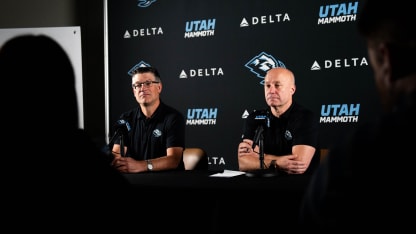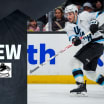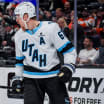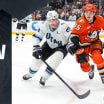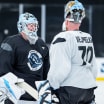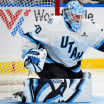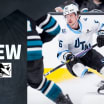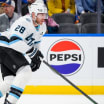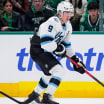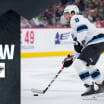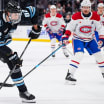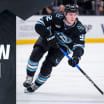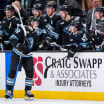Utah struck gold on some of those hidden gems as several players the organization liked were still available in later rounds.
“Every year it’s ‘I can’t believe that guy is there in the sixth round, I can’t believe that guy is there in the third round,’” Jankowski explained. “I think when we look at our first three picks, that gives us a really good head start on the draft this year, especially with Caleb (Desnoyers) and then followed up with Max (Pšenička), which we were just thrilled to get. Then Štěpán (Hoch), we knew we’d have a chance at him but for him to be there was awesome and set our day off in motion.”
Late in the Draft, Utah traded its 2026 sixth-round selection for Nashville’s 2025 sixth-round pick to grab yet another player they were passionate about: defenseman Reko Alanko.
“Later on, there’s always players that the scouts like, and Ryan and I like, and they’re hanging around,” Plandowski explained. “Bill’s always said, if there’s someone hanging around that you guys like, we’ll get another pick.”
That’s what makes Armstrong a strong General Manager: listening and respecting his scouts opinions. It’s no surprise he does. Armstrong was an amateur scout for the St. Louis Blues from 2004-2010 before he was elevated to Director of Scouting for the organization. Armstrong held that role for another ten years before he became an NHL General Manager.
“Bill (Armstrong), Ryan (Jankowski) and I have known each other for probably 20 years so the nice part for us to work with Bill is that he understands what all scouts go through,” Plandowski shared. “He understands the process, he understands what we’re thinking, and he understands the language and he cares, he listens, and he tries to make sure that the scouts are taken care of.”
A common theme within Smith Entertainment Group and its teams is buying in and doing the job the right way. That starts with management and drafting the best players for the organization. Utah takes into account a player’s personality and off-ice attributes. The Mammoth want their prospect pool and locker room to be filled with driven individuals who come together and fight as a team.
In hockey, being drafted is the start of the rest of your career and the end of everything you knew before. Players have to work harder, grow their game, and perform at higher levels every step of the way. Once you make it to the NHL, you have to keep fighting. For a team that wants to bring a Stanley Cup to Utah, building a strong culture starts right after players are drafted to an organization, and continues throughout their careers.
“When you know the people in the locker room to your left, to your right, you’ll fight harder,” Armstrong explained. “That’s a big thing for us. That culture is born in deep by getting our players to love each other and fighting for the same thing. They’ve got a great opportunity. It’s an incredible opportunity to come in here and drive this organization into winning a Stanley Cup. It’s never happened (here) before. So, they’ve got a big goal ahead of them and we’re going to help them realize that and see if we get them pushing in the right area and going on the right direction.”

